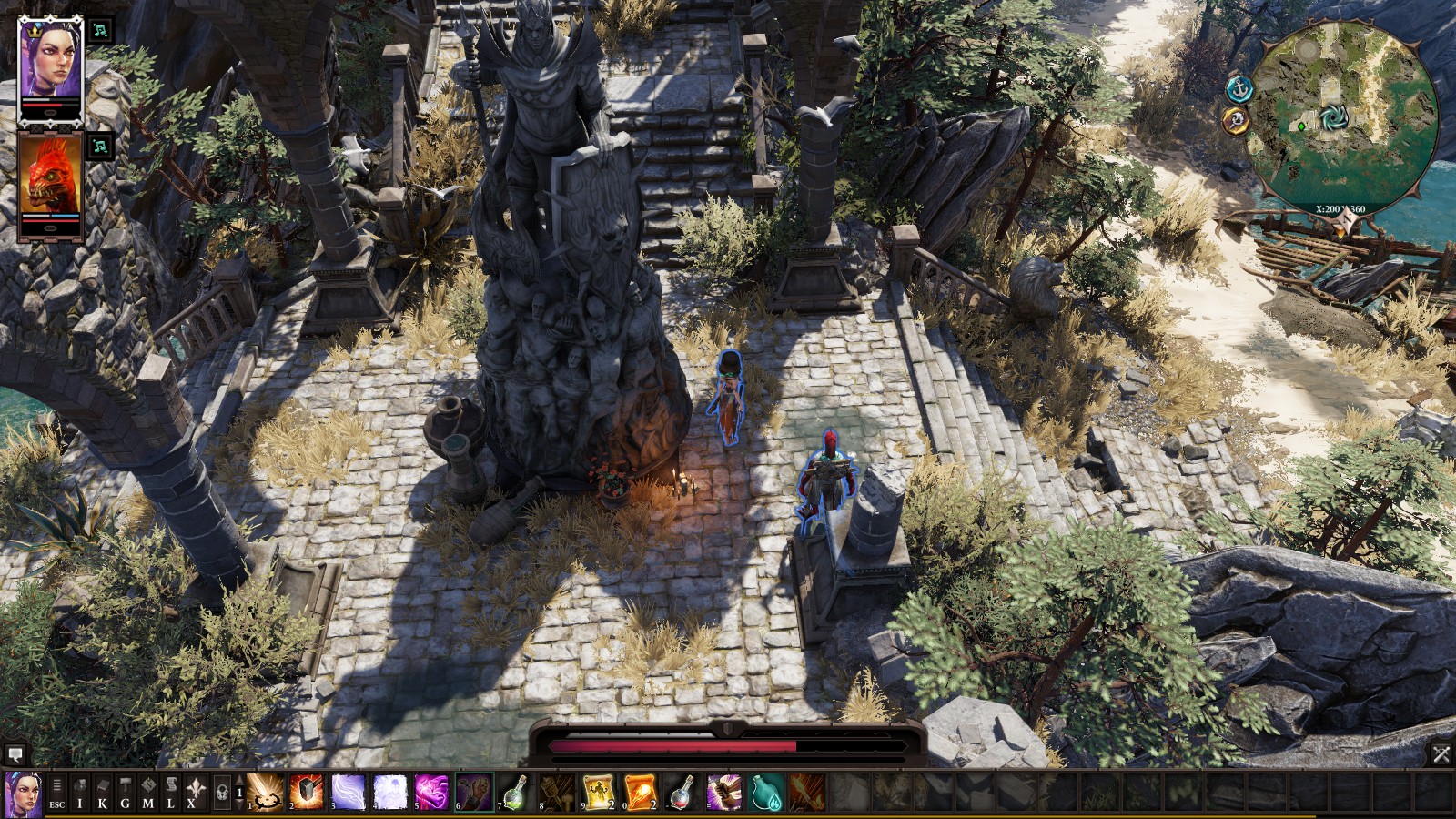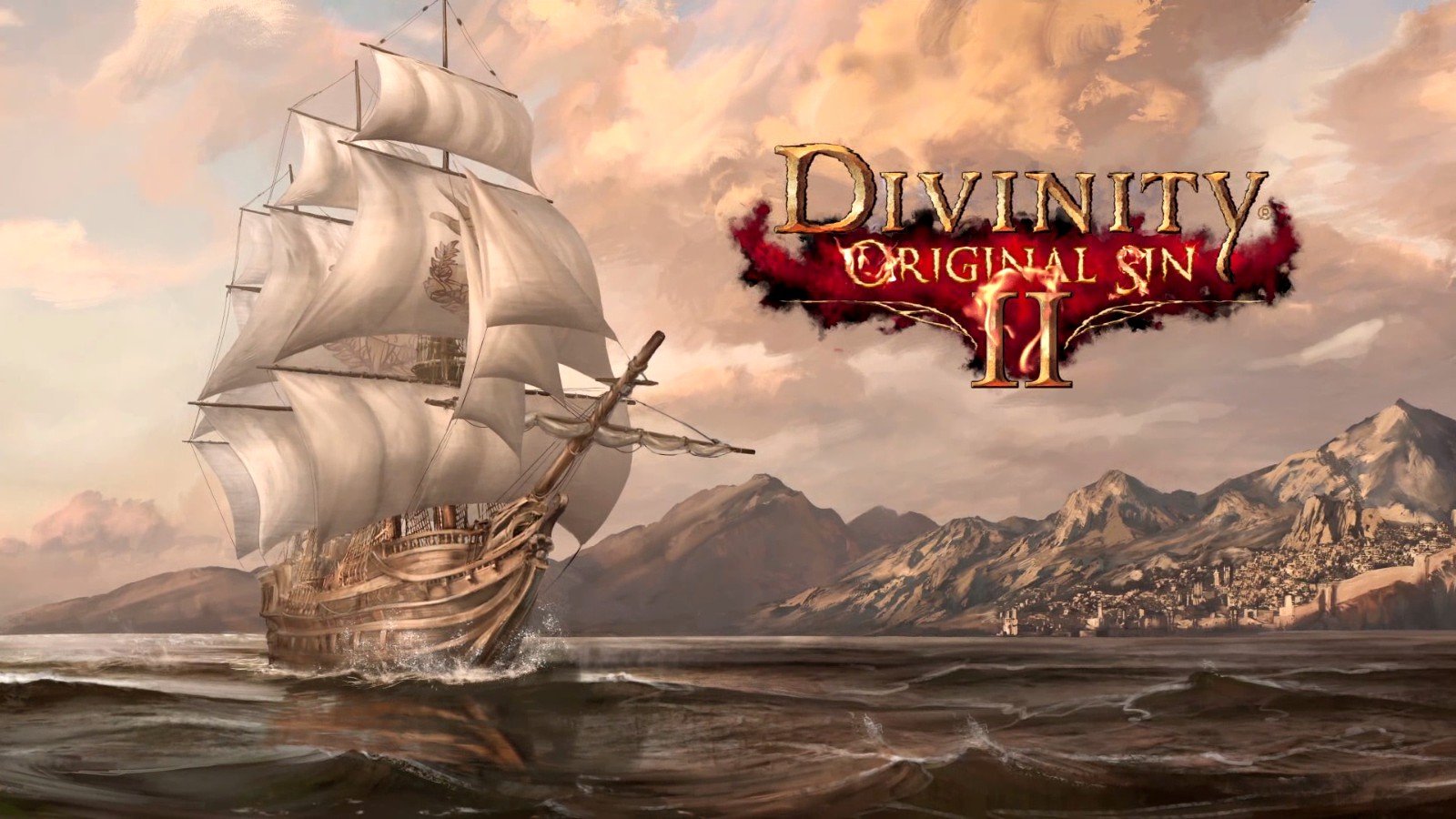The resurgence of classic cRPGs continues with Larian Studio’s Divinity: Original Sin 2, one of our most-anticipated RPGs of the year. And I’m pleased to report the game lives up to the hype, and matches or surpasses its predecessor in every way.
This turn-based, tactical high-fantasy RPG kicks off from an excellent starting point, as Sourcerers of potentially world-shattering power are shackled, their abilities suppressed through collars akin to the Rada’Han from The Sword Of Truth series.
You, of course, are one such unlucky Sourcerer, being shipped off to the erroneously named Fort Joy to live out your days as a prisoner until the taint of Sourcery can be exorcised from the world. Turns out the previous Sourcerer King wasn’t exactly a great guy, and now the rest of the world isn’t having any of it.
As you progress, a huge number of options will be presented to you along your journey from ship to shore, and that’s really what this game is all about.
Will you chafe against your slavery and treat your captors with disdain, seeking escape at the first opportunity? Will you respond to your guards with goodwill — they are just doing their jobs after all — and recognize maybe this is all for the greater good? Will you steal everything you come across and just be a mass murderer?
All are valid options in Larian’s triumph of an RPG.
 Devastatingly powerful spellcasters tend to not stay shackled for long…
Devastatingly powerful spellcasters tend to not stay shackled for long…
Choices, Choices, Choices
The heart of Original Sin 2 revolves around an array of options letting you play how you want to play, and not being forced down any particular build or path. The options available are even more varied than in the first game, although there was plenty of rumbling discontent among the forums prior to launch regarding the core pre-generated characters.
There was a lot of speculation among fans that there wouldn’t be any customization among companions, since the main origin stories you can pick at character creation all end up being companion characters that can join the party.
Turns out that was an unfounded speculation, as you can ignore (or even kill) those origin characters, but if they do join your party, you have total control over their starting classes and how they level up. So, a player can really make any kind of party they desire over time.
Beyond party customization, there are just an absurd number of ways to tackle any given situation (in or out of combat) and tons of viable builds. Damage reflecting sadomasochist necromancer? Check. High-ground taking fireball arrow-flinging ranger? Check. Tactician in total command of the battlefield through magic and sword? Check. That one cheesy guy who teleports, sneaks, and uses furniture to always be out of harm’s way? Oh, double check indeed.
The sprawling game world is incredibly reactive and easily corrects course based on any ludicrous thing you decide to do at any given moment. Unlike most RPGs, your party can literally kill anyone. Doesn’t matter who. The game will soldier onward even after you’ve massacred every child, quest giver, and skill-book vendor in the area. Sure, you might end up a little underpowered without all those extra skills, but you’ll be laden with loot and experience, and other NPCs down the line will react differently to your band of butchers.
All the elements that were loved (or for some poor souls, loathed) from the first game return, like combat that revolves around a flaming, electrified, poisonous, slippery battlefield. But that’s not it. That whole battle scheme has somehow been extended even further, and even refined a bit, so the battlefield effects are even more dynamic.
This takes a little trial and error to master — I’ve lost track of how many times I accidentally set my own party on fire because I wasn’t paying attention to the flammable liquid on the ground while deploying the Pyromancer — but when you get it down, this is a very satisfying way to engage in battle.
 Plus, you can play as a face-stealing skeleton, and that’s just awesome
Plus, you can play as a face-stealing skeleton, and that’s just awesome
Dialog, Characters, and Roleplaying
Conversation, whether just random chats with NPCs or quest-critical dialog, are expanded by Tags, some of which you choose at character creation and some of which are added based on how you play the game. These Tags bring up new dialog options depending on whether you were incredibly helpful, a mass murderer, a total asshat to everyone you met on your journey so far, and so on.
Honestly, I’m really impressed by how often the Tag system comes into play, especially compared to other classic RPG revivals like the Shadowrun Returns trilogy of games. The special dialog Etiquettes you could choose from in that series were utilized only sparingly, and some really weren’t helpful at all. That is not the case with Divinity: Original Sin 2, where nearly every single conversation with any NPC will have multiple Tag options.
The constant Tag mechanics make it feel more like you are actually roleplaying and can develop a personality for your characters — rather than just choosing the option you think will lead to the biggest reward or the best quest line.
Although the subject matter is grimmer this time around, there’s still a whole lot of the Original Sin humor, too, which is actually one of the few negatives for me, as I’m not a fan of comic relief in fantasy. A character still turns into a shrub or hides under a barrel while sneaking, for instance, and there’s plenty of fourth wall breaking quips. I rolled my eyes when Fane mentioned how he knew he could trust me because I didn’t have a red outline like everyone else he’d fought in the past.
 Buckets also double as excellent starter helmets
Buckets also double as excellent starter helmets
However, the overall writing and cahracters are a step above the previous game. Each of the origin characters feels more interesting and unique, and if you like the oddity of the Pillars Of Eternity / Tyranny / Torment type characters, there’s much more of that on display than in the previous game.
Elves, for instance, consume the flesh of dead people to gain their memories (making them rather disdainful of fleshless undead). As you can imagine, this makes some people uneasy, but also leads to awesome dialog and even free skills if you eat everyone you come across. Undead, on the other hand, can steal the faces of other people and pretend to be them, drastically complicating many scenarios. Lizard characters, meanwhile, think of themselves as superior beings and look down on the lesser races.
Normally, in any given classic RPG of this style, I’d put all my points in the dialog stats, but I wanted to cheese my way through combat with teleportation and sneaking on the first playthrough instead. To make up for my lack of charm, I had The Red Prince companion take the role of frontman, since he gets a bonus to Persusasion.
This was a hilariously bad idea that led to some of the best dialog I’ve seen in some time, as our lizard prince’s conversation options usually revolve around treating people like less than dirt or assuming anyone he meets would love to volunteer to be his lifelong slave.
But on top of great dialog choices and creative scenarios, each origin character has their own quest line, as they were all obviously in the process of doing things important to them before being captured and collared. I honestly can’t wait to replay Original Sin 2 several times as each of the main origin characters to get more of their stories.
 There’s a big, beautiful world with lots to discover
There’s a big, beautiful world with lots to discover
The Bottom Line
I’ve been trying to think of things I legitimately don’t like about the game and can only come up with minor quibbles, like the fact that some of the standard key bindings don’t quite make sense to me. Why does the G button bring up the crafting screen instead of the C button? Why does tab switch to combat instead of highlighting the stuff on the ground?
Other than that, and my distaste for comic relief, there’s really nothing about Divinity: Original Sin 2 that doesn’t scream “RPG of the year!” It’s got everything an RPG fanatic could want: crafting, 10 types of skill categories to choose from, different build foci, robust combat, interesting characters and quests, and plenty more. Basically, if you love anything cRPG related from the Infinity Engine forward, you need to buy this game.
Ready to dive in? Head over to our character creation guide here and get started!







Published: Sep 15, 2017 01:36 pm